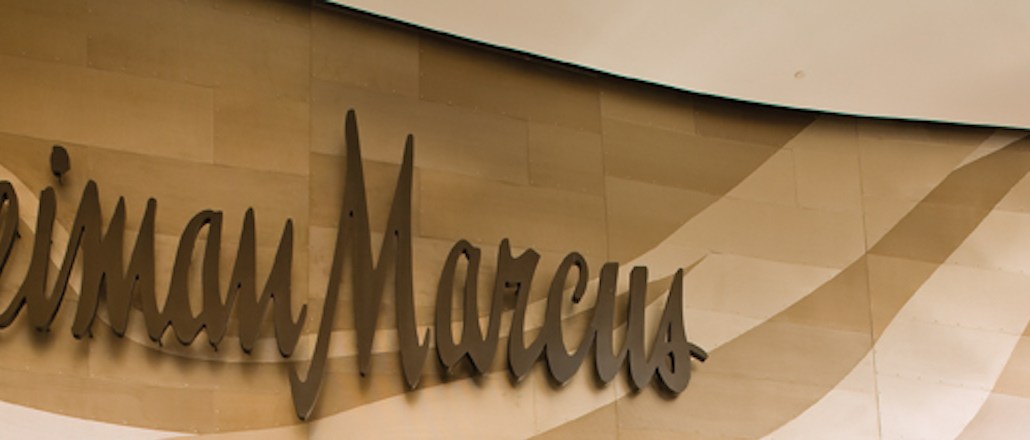Insights from CTV leaders at Dentsu, Horizon Media and more
Neiman Marcus expands visual product search to push mobile purchases

Neiman Marcus is trying to solve the struggle for customers who can picture the item they’re shopping for but can’t describe it. In order to make the search easier, the retailer recently expanded its smartphone-enabled “Snap. Find. Shop.” function to all of its luxury departments.
Powered by product-discovery platform, Slyce, Snap. Find. Shop. is a visual recognition tool meant to eliminate poorly phrased product descriptions leading to futile searches for shoppers on the hunt for a particular item. Instead, Neiman Marcus customers can go to the Snap. Find. Shop. section of the retailer’s app, take a photo of a product, then wait a few seconds while results are gathered. A selection of items either identical or closely matching the photographed product appear for perusal and purchase. Slyce CEO Mark Elfenbein calls it the “Shazam for stuff.”
Neiman Marcus first teamed up with Slyce in October 2014, not long after the company’s launch that fall. Only women’s handbags and shoes have been searchable through the technology, but after nearly a year, Neiman Marcus has decided to roll it out to all items in both men’s and women’s departments due to customer demand.
“When we initially rolled out with shoes and handbags, we found that customers were taking lots of pictures of items in other categories as well,” said Neiman Marcus’s CMO Wanda Gierhart, adding that the most-searched items were dresses and jewelry as well as shoes and handbags. “We always try to exceed our customers’ expectations, and realized there was a demand to use this technology across all the products we sell.”
Neiman Marcus is preparing for its IPO, and the luxury retailer’s focus on digital commerce was apparent in its S-1 filing from earlier this August. Its data found that 75 percent of its customers’ total luxury spending was “digitally influenced.” The company went on to write in the filing that “improvements in our mobile technology will enable us to generate further insights into our customers and drive greater engagement and loyalty.”
Ben Kennedy, group director of digital at The Integer Group, said that the technology helps Neiman Marcus “compress the journey” between search and purchase.
“To the naked eye, this technology appears almost “tactic-like,” however, with further examination one can see how this fits soundly into a larger strategic roadmap for mobile that plays up a core customer value, aspiration and accessibility,” said Kennedy.
While Neiman Marcus declined to disclose specific data regarding how many Slyce searches were generated in the app during its 10-month test period, Elfenbein said that since October, its 12 million users have conducted thousands of searches per day with Neiman Marcus as well as Slyce’s other partners Home Depot, Shoes.com, Tilly’s and JC Penney.
“For Neiman Marcus, customers kept returning to the tool, and that was what led them to expand,” said Elfenbein. “Typically, in fashion, it’s almost impossible to describe the specific product and patterns you’re seeing when you want to Google an item.”
Elfenbein said that Slyce’s technology takes up to 25 different characteristics into account when identifying a product, like stitch, material and pattern. While some products generate a one-to-one match, some retail partners, including Neiman Marcus, can predetermine a specific set of products from a mix of brands and designers to be identified with some search criteria.
Slyce’s technology is linked to real-time inventory to facilitate instant purchases via mobile, strengthening Neiman Marcus’s mobile commerce offering. During Neiman Marcus’s earnings call following 2015 second quarter results ending Jan. 31, CEO Karen Katz said that the company’s goal was to “make it easier and easier for people to shop on their mobile phones. It’s hard to know what percentage it will ultimately be of the overall e-commerce business, but it’s becoming more and more of a factor in how we think about our business.”
In the first three quarters of 2015, e-commerce (which include mobile) accounted for 25.8 percent of all Neiman Marcus sales. By the end of 2014, 23.9 percent of purchases were from e-commerce. The expansion of Snap. Find. Shop. as well as the company’s early adoption of Pinterest’s instant buy buttons are two ways Neiman Marcus is driving easier mobile sales. Gierhart also believes that Slyce’s technology will drive more mobile app downloads.
“As with any new technology, we found that it took our customer some time to understand how to use it well,” she said. “We continue to be excited about the increase in adoption. Overall, [we’ve had] very positive feedback.”
Image courtesy of Neiman Marcus.
More in Marketing

Retail media’s mid-2025 reality: Why advertisers are going all in on full-funnel
Retail media’s meteoric rise may finally be leveling off — and that’s forcing advertisers to take a harder look at what they’re getting for their money.

TikTok might be working on a standalone U.S. app, but marketers aren’t sold on the idea – yet
TikTok is developing a lifeboat for its American business, but media buyers are wary of advertising implications.

Bold Calls for the back half of 2025
Now’s a good moment as any to take stock —and make a few bold calls about what’s coming next.





